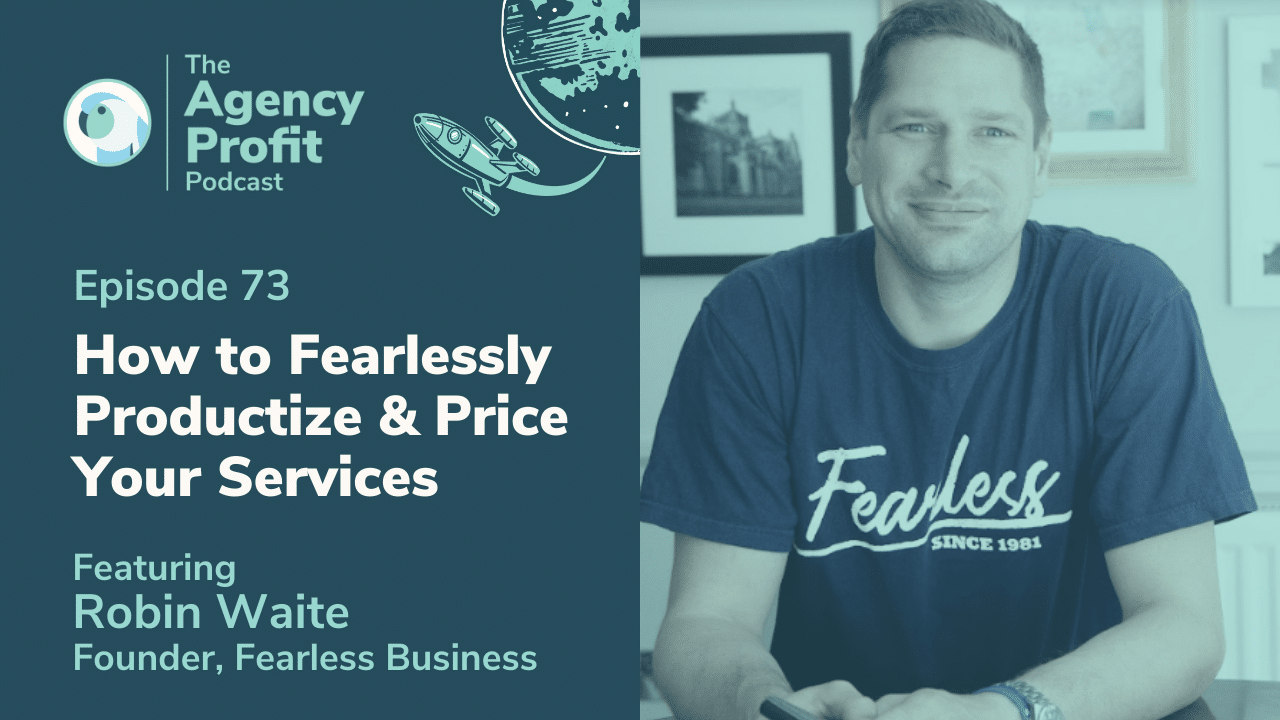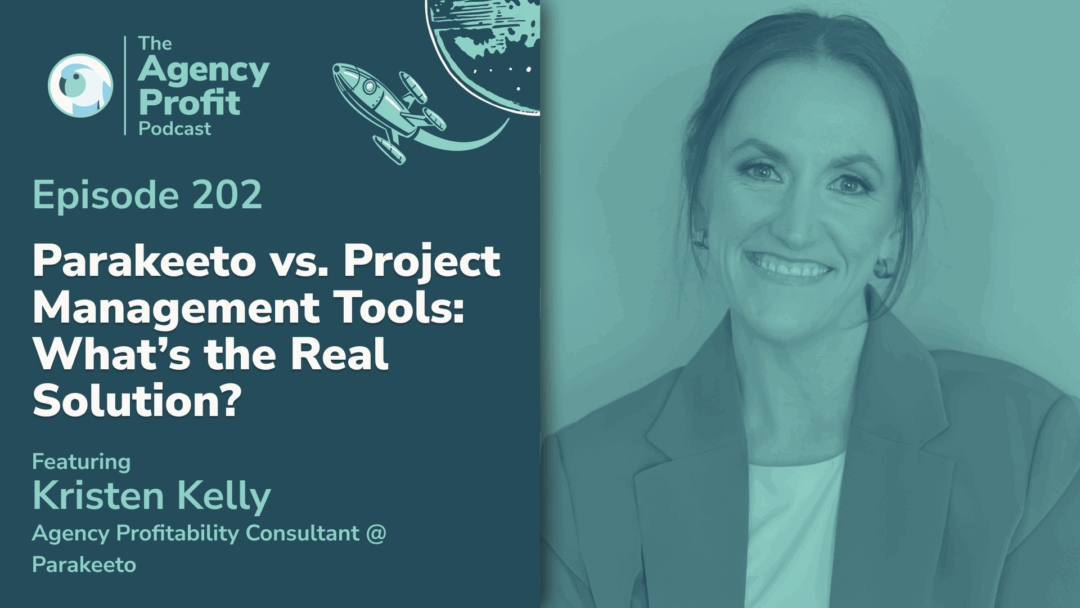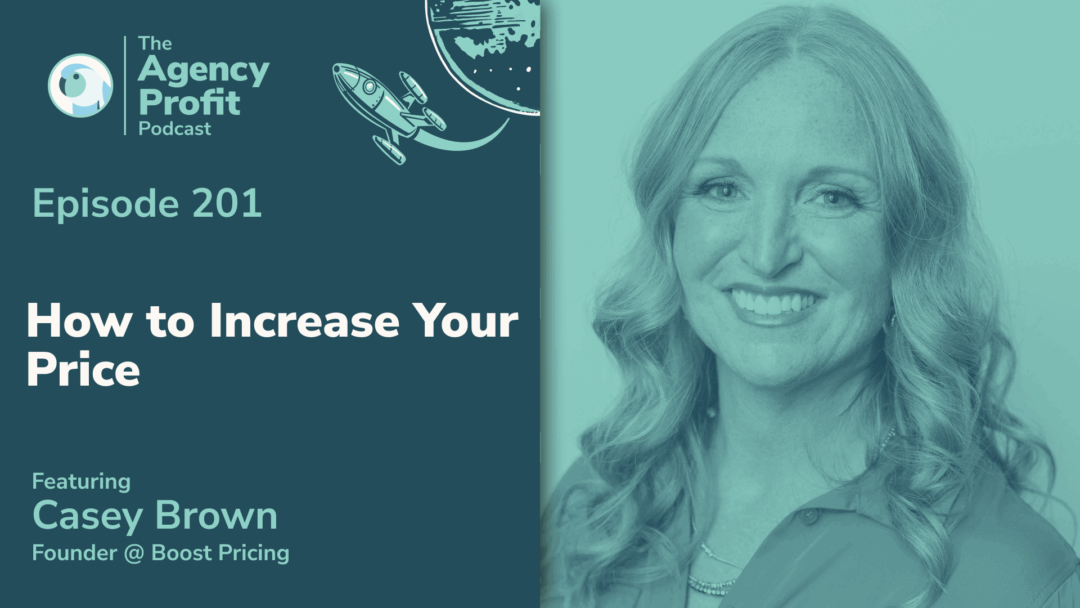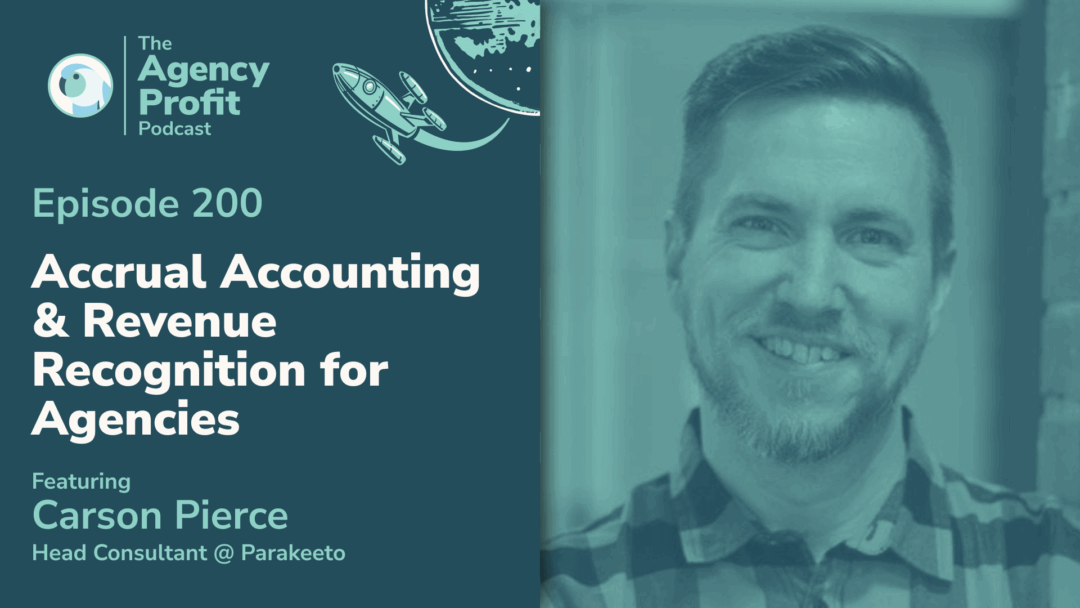Welcome back! This week, we chat with Robin Waite of Fearless Business. Today, we’re digging into the nuances of how best to Productize and Price your services.
About Robin Waite…
In addition to Robin being founder of Fearless Business, he is also a regular speaker at various business events and the bestselling author of several books, including Online Business Startup, Marketing Machine, and the recent popular release Take Your Shot. He puts his 2 decades of business experience to work, coaching clients to reach their goals while creating more time and increasing their revenue.
From 2004 to 2016, Robin led a successful marketing agency serving over 250 clients. During this time, he delivered workshops and masterclasses aiding over 1,000 business owners to improve not just their marketing and product architecture, but also their pricing, their websites, plus their digital advertising.
Behind the scenes, Robin is a husband and father to two young girls, a surfer, and “Sunday warrior” (road cyclist). He has also – in the last four years alone – raised over £5k for a local Children’s charity, and imposed a goal to help remove 100kg of plastic from the World’s Oceans within the next 12 months via another charity he supports – 4Ocean. Furthermore, he holds a Guinness World Record for participating in the largest ever speed networking event!
Points of Interest…
- What Productizing Your Services Entails 2:53
- Identifying Best Candidates For Productization 6:14
- Cultivating Creativity when Productizing Services 9:08
- Standardizing Scope When Pricing Your Services 13:14
- Gross Profit Margins When Pricing Services 17:46
What Productizing Your Services Entails
This isn’t the first time we’ve addressed productizing services. If it’s a term you’re not entirely familiar with, for whatever reason, here is Robin outlining what exactly Fearless Business does for their clients…
“We help coaches, consultants and freelancers to get out of charging time for money. If they’re an hourly rate business, currently, the idea is that we can productize their business so they can stop charging time for money. Typically, we tend to find they are able to charge double, or triple, what the going rates are for their services. And we do that in a relatively short space of time. The ideal result within about three months.”
If you choose to venture down the path of productization, you should be given the gift of clarity, the keys to articulate your services, and the problem that you can solve. Bolstered by examples of your deliverables, you can effectively pitch your services. Before you know it – the magic starts happening… clients start responding to different price points. This double effect then increases your margins, the pricing then increases and the process gets condensed.
OK, so what does it really mean to productize the service? It all boils down to specifics. There are three very simple levers that Robin looks to when productizing a client’s services. You may find some of them familiar…
- You should be able to identify what a really clear/specific outcome or result you’re going to deliver for your client. If you can’t articulate that well, you’re going to struggle to be able to productize anything. Pick one thing, and do it really well.
- It needs to be delivered over a very specific time period. ***Robin elaborates on this more from 4:14 minutes***
- It needs to be done for a fixed fee. If you’re more experienced in your field, you should charge your worth. Either way, you will be better off financially; with experience comes speed which should result in increased productivity.
Identifying Candidates for Productized Services
How do we start thinking about identifying services that should be productized and starting to formulate what that might look like? According to Robin, it looks a little something like this…
“It’s quite a simple sort of process, really. So you’ll have a list of things that can be done for both the market niche and the product niche actually, but – essentially – create a matrix. Or a simple spreadsheet.”
As for what you focus on in this matrix/Excel doc? Well, who you would most like to work with, of course! So…
- First column, input is a list of prospective clients you could work with.
- Second column, cite how passionate/confident you are about working for these people and delivering results.
- Third column, ask if this niche can actually afford to pay for your service.
Then, for each one of those categories, mark them on a scale of one to 10. What you now have is a list of potential target markets that you can explore. If you have marked each of those three criteria out of a scale of 10, the one that scores the most across the board – the one that we can get the best results with; we love working with; the one that can afford to pay us – THAT is your Ideal Market Niche.
This same process can be applied to help identify your Ideal Product Niche. Building out the third part of this trifecta is your Ideal Pricing Niche. ***Robin expands further on this grading scale from 7:43 minutes***
Side note: our Agency Profit Toolkit is a one stop shop for you to be able to outline some of these crucial profitability numbers to a potential buyer. Spreadsheets, templates and training videos, you name it, it’s all in the toolkit. Grab yours free at the link below:
Cultivating Creativity When Productizing Services
A recurring sentiment among creatives when broached about productizing their services is the overall sense that they are neutering their creativity. What I actually believe wholeheartedly, however, is this: if we design our processes well, it’s actually going to enhance creativity. Defining your process brings with it a level of fidelity that will encourage creativity in the pockets where it needs to exist.
For example; you can’t give every client the same logo, the same color palette, the same website. However, you can still have the same process by which you come to a result that is good for that client and still ends up being customized for them. So don’t conflate having a lot of processes with being “uncreative.” Or, as Robin puts it…
“When you have a creative, who is sat there saying, ‘Oh, this productized process is really stifling my creativity.’ I’d be like, ‘That’s pretty damn selfish.’ In actuality, the whole purpose behind setting up a business is twofold. One is to make a profit – otherwise, what’s the point you’re going to go out of business. The second thing is to serve. You’re here to serve the client.”
Throughout the sales process, the marketing, the delivery, the fulfillment – if your ego starts to step in there, you’re going to be doing a disservice to your client.
Standardizing Scope When Pricing Your Services
Now, there are going to be a lot of people listening who might be thinking, “We already charge flat rates, so we’re already productizing.” Chances are, you have instead moved to what the industry is now doing – Time and Materials – billing disguised as flat rates.
This is due to the fact that clients don’t possess the risk tolerance to take on time and materials billing anymore. So, now you’re relegated to this inferior option – a flat rate that is based on your assumptions about time and materials. Most of the time, you don’t scope those things properly, so you wind up spending more time – not less!
If you’re still in this hellscape, the key difference should be based on standardizing your scope. This results in fewer elements to mitigate/decipher while providing the possibility of applying a contingency. By and large, the scope should be similar in a productized service. From there, it’s an exercise of now starting to push the price up based on what the value is to the client – while also making the process easier on the backend.
More often than not, your clients will be comfortable paying a higher price point as they’re keen to de-risk a process. How can you convey this to the client? Well, you need to become an expert at calculating ROI…
“You need to be a master at working out the return on investment your clients are going to get when they invest in you. I think a lot of creatives are afraid of talking numbers and helping their clients to work out what this ROI is going to be.”
When a client is considering purchasing your services, there are three key questions you need to ask.
- Define your current turnover?
- What turnover would you like it to be?
- What is your budget for this project?
- If we collaborate on this project, what do you perceive to be the ultimate result for you and your business?
***Robin delves into defining a client’s “ultimate result” from 16:17 minutes. We did a whole episode on value-based pricing with Blair Enns, so if you want to go deeper on the concept of quantifying impact, definitely refer to that***
Gross Profit Margins When Pricing Services
With our chat drawing to a close, I ask Robin to define the margin we should be aiming for at a baseline, with a product tie service, and how high has he seen it?
“Gross profit margins, minimum 50% I would say. Net profit? Really, a product productized business should be pushing in the region of 30% net profit. That’s the ultimate; that is a really healthy service client business.”
Robin stipulates that there are three things that need to be considered when pricing your services…
- Your Time and Materials (yep, that old chestnut)
- Additional overheads and/or expenses that crop up
- Intellectual property
You could literally triple somebody’s rate simply because you include those three things in the calculation. One of the really interesting things is this; if you’re not charging enough then – in effect – you’re offering a discount… ***Robin digs into this further from 19:47***
Key Takeaway…
Believe in your products – so much so, that you could confidently offer a 100% money-back guarantee based on the value, results, and outcomes that you deliver for your clients. To aid you in this regard, consider the below! Also, consider getting yourself a copy of Robin’s latest book Take Your Shot, it’s full of super helpful insights like those outlined here…
- Simplify Your Product Range: you need just 3-5 core products to satisfy 90% of your audience’s needs.
- Package It Up: get comfortable pitching a big number rather than hourly rates.
- Charge More With Confidence: identify a “pricing bandwidth” from what you’re currently charging, up to way outside your comfort zone. Then, by way of an auction, work out the price point which sits just outside your comfort zone.
- Validation and Feedback: pitch that product at your new price to at least 10-20 prospective clients. If you’ve done the work, you’ll convert 1:5 to 1:3 of those prospects into clients.
Want to see more from Robin?
- Robin’s latest book ‘Take Your Shot’
- Robin’s website
- Fearless Business website
Did you learn anything new from this episode? Let us know in the comments below! We have a bunch of helpful blogs designed to bolster your agency profitability, such as How To Calculate Your Billable Employee Cost-Per-Hour.
Our next installment of #APP, on November 17th, will see us chat with Rob DaCosta. Our previous blog with Emeric Ernoult is here…
Agency Profitability Tool Kit
If you’re looking for more resources to help you improve your agency’s profitability, check out the Agency Profitability Tool Kit. It’s full of templates and checklists used when consulting clients. This helps them improve profitability by over 100% in under 60 days.








0 Comments